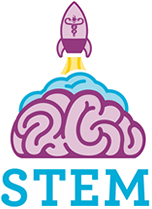JSHS National Competition
Junior Science and Humanities Symposium National Competition: Success in STEM in a Virtual Environment
May 11, 2020
Given the unprecedented circumstances related to the COVID-19 pandemic, many programs and events have made the difficult decision to postpone, cancel, or move to a virtual platform. The National Junior Science and Humanities Symposium (JSHS) Competition was the first Army Science, Technology, Engineering, and Math (STEM) event to transition from an in-person competition to a virtual effort. Execution of this event took place over the Zoom® virtual platform. The administrators of the program, including both the National Science Teaching Association (NSTA) and the Army Educational Outreach Program (AEOP), worked quickly and efficiently to organize the event in an online atmosphere.
From April 15-17, 230 students from across the nation signed onto their computers to take part in the National JSHS event. Typically held in Virginia Beach, Virginia, the National JSHS Competition is a platform for students to showcase STEM research through oral and poster presentations while competing for scholarships and recognition. JSHS is a collaborative effort with its tri-service partners, the U.S. Army, U.S. Navy, and U.S. Air Force.
Presentations are divided into two categories: oral and poster. Top winners in the oral presentations received a $12,000 scholarship, while individuals that earned high marks for a poster presentation earned a $550 scholarship. This year's first place recipients were:
Oral Presentation Winners:
- Environmental Science
Julia Kagiliery, The Episcopal School of Jacksonville; Jacksonville, Florida
Research Title: A Dual Sensor Machine Learning Approach to Sulfur Quantification of Lignite Coal - Biomedical Science
Evelyn Bodoni, Cherry Creek High School; Greenwood Village, Colorado
Research Title: Novel Preventative Strategies for Acute Kidney Injury & Chronic Kidney Disease - Medicine & Health/Behavioral Science
Sarah Burkey, Rockdale Magnet School for Science and Technology; Conyers, Georgia
Research Title: Developing A Urinalysis Immunoassay for Cortisol Detection Year 2 - Life Science
Audrey Anderson, Omaha North High Magnet School; Omaha, Nebraska
Research Title: Resilin Distribution and Abundance in Apis mellifera Wing Joints across Biological Age Classes - Engineering and Technology
Ryan Westcott, Oregon Episcopal School; Portland, Oregon
Research Title: Development of a Fully Reusable and Autonomously Landing Suborbital Launch Vehicle - Physical Science
Mina Mandic, St. Paul Academy and Summit School; St. Paul, Minnesota
Research Title: Exploring the Wonders of the Early Universe: Green Pea Galaxies and Light Flux - Chemistry
Emma Steude, The North Carolina School of Science and Mathematics; Durham, North Carolina
Research Title: Synthesis of a Tau Aggregation Inhibitor in Relation to Alzheimer's Disease - Mathematics and Computer Science
Ryan Park, Millburn High School; Millburn, New Jersey
Research Title: X-Net: A Deep Convolutional Neural Model for X-Ray Threat Detection
Poster Presentation Winners
- Environmental Science
Diya Desai, Caddo Parish Magnet High School; Shreveport, Louisiana - Biomedical Science
Shruthi Ravichandran, Brown School, Shaker Heights, Ohio - Medicine & Health/Behavioral Science
Samuel Aberman, Byram Hills High School; Armonk, New York - Life Science
Pooja Kasiviswanathan, Ames High School; Ames, Iowa - Engineering and Technology
Brendan Crotty, Hickory Hill Academy Home School; Muskogee, Oklahoma - Physical Science
Ashley Granquist, William H. Hall High School; West Hartford, Connecticut - Chemistry
Emma Price, Camdenton High School; Camdenton, Missouri - Mathematics and Computer Science
Sadhana Lolla, Poolesville High School; Poolesville Maryland
For a complete list of award winners, please visit here.
How did virtual JSHS work?
Participants were provided clear, concise instructions prior to the event and were assigned a presentation time. When participants, judges, and guests logged onto Zoom using the event code they were placed into a waiting room. An event moderator moved the individuals from the waiting room into the virtual meeting rooms, which ensured that the correct students were placed into the right room with their panel of judges and guests were able to select which participants they wanted to view. The chat feature was used to communicate throughout this process.
During the awards ceremony, attendees were again placed into a waiting room until the ceremony began. A moderator welcomed everyone to the event and thanked individuals for their participation. Dr. Philip Perconti, U.S. Army, and Rear Admiral David Hahn, U.S. Navy, spoke of the importance of involvement in STEM and the impact that events like JSHS have in building the bench for future scientists and engineers. Slides with the award winners in each category were presented as the moderator announced the winners individually. At the end of the awards ceremony, the moderator turned the microphones off mute and allowed attendees to clap, cheer, and congratulate the participants.
Overall, it was clear that the teams at NSTA and AEOP put in many hours of planning and had thought through all potential issues prior to the event. Giving students a platform to showcase the time and effort they put into their research was crucial, and providing rewards for excellence encourages the students to continue exploration in STEM. Moving forward, it will be important to continue to offer students these types of opportunities through other programs and events despite the restrictions related to the COVID-19 pandemic. The National JSHS Competition showed that moving to a virtual platform can be extremely successful.
How do I organize my own virtual event?
There are many considerations when organizing a virtual event including participant capabilities, communication needs, and platform selection. With many students around the nation currently finishing the remainder of their school year online, most school districts have provided students without home computers or internet, a laptop or tablet, and hotspot to continue their education. Student access is the main concern for going virtual and making sure accepted participants have a way to access online platforms is a priority. The next consideration is to analyze communication needs. Video, audio, live-streaming, recorded content, chat features, document upload, and slideshow capabilities are some of the tools available through different platforms that should be discussed when designing a virtual event. Making sure the needs of the students are met and effective communication is present will help create a successful event.
Finally, there are a variety of platforms with various capabilities that can potentially host different virtual programs or events. A combination of platforms can even be used to achieve a desired goal. Common virtual platforms include Google Drive, G-Suite, Slack, and Zoom. When a platform is selected, it is important to provide training or guidance in using the platform prior to execution of the program. Providing resources ahead of time ensures that all individuals involved in the event are able to access the platform and are comfortable navigating it.
Moving forward
STEM education, especially in youth, allows students to become problem-solvers, create new technology, and helps to spark interest in STEM careers. For these reasons, it is important to continue to provide opportunities for students to explore STEM regardless of the circumstances. Moving programs to a virtual platform is a great alternative that has proven to be effective. Through this most recent effort, the National JSHS Competition was able to show that STEM programs can be successful even in a virtual environment, therefore paving the way for other STEM programs to succeed virtually as well.









